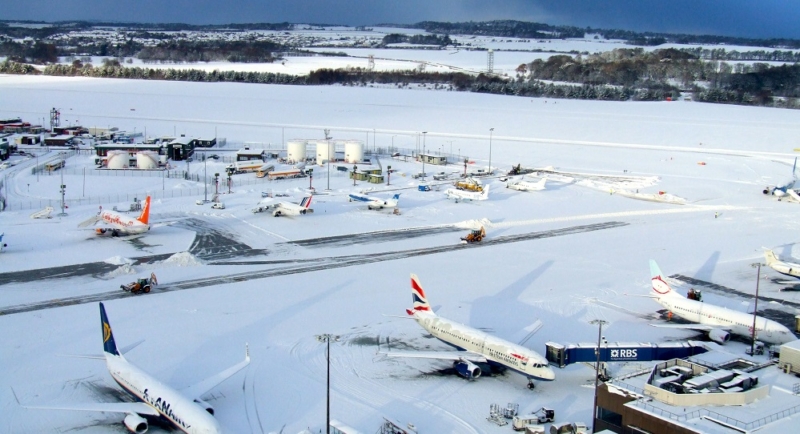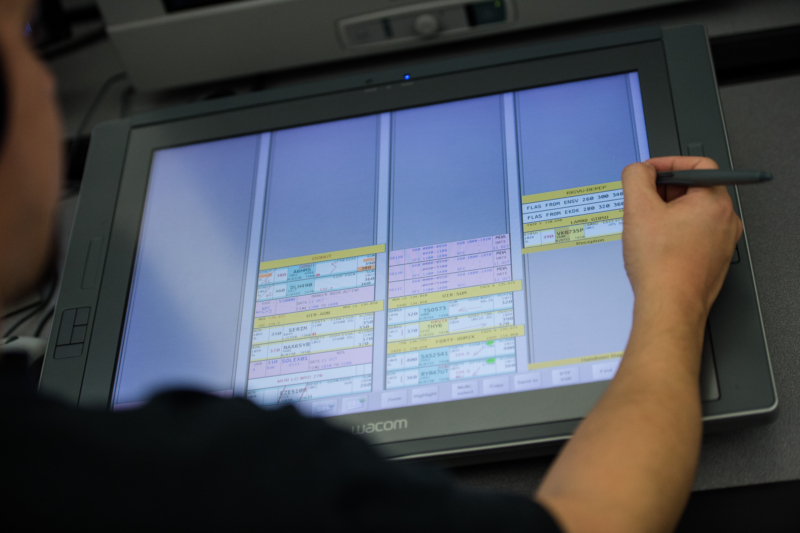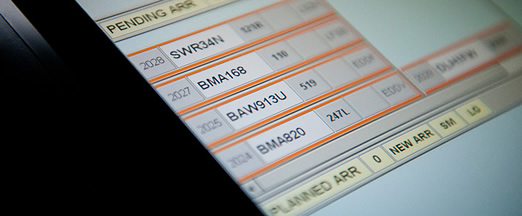Going with the flow…
12 December 2016The first rule of air traffic control (ATC) is to maintain safety. Most of the time that job is pretty invisible to the travelling public, and we like to keep it that way.
The only time most people notice us is when there is a delay to their flight, which can often be caused by ATC having to apply “flow regulations”.
This is when we need to reduce the amount of traffic entering our airspace in order to maintain a safe operation, because of things like bad weather, or not enough room on the ground at the destination airport.
For example, bad weather across the UK this week has caused disruption to flights while runways, taxiways and airport aprons are contaminated with snow and ice, which then needs to be cleared and in turn reduces airfield capacity. As such, we have been working with the airlines and airports to agree flow regulations that allow them to handle as many flights as possible in what are very challenging conditions. Inevitably this results in delays and cancellations, but It’s a decision that’s never taken lightly and is always done with safety in mind.
More correctly known as Air Traffic Flow Management (ATFM), flow regulations are put in place to reduce or slow down air traffic in order to avoid the airport or air traffic controllers from exceeding capacity, and to ensure that the available capacity is used as efficiently as possible. It’s a standard method used for air traffic handling throughout the world and is not unique to the UK.

There are around 2.2 million flights in UK airspace every year.
Put simply, if there is a reduction in airport capacity on the ground because of the time taken for snow clearing and de-icing, or low visibility, it might be necessary begin metering the flow of traffic through the specific airspace sectors en-route to that airport. Similarly there is a finite number of aircraft that an controller can safely handle at any one time. On a clear, calm day that might be as high as 15 depending on the airspace sector, but throw in some bad weather and the complexity rises enormously.
In very extreme weather conditions, it is possible to put a “zero flow rate” in place, though this is used in rare circumstances and doesn’t mean airspace is closed.
If, for example, there’s a huge storm within a particular sector of airspace, a zero flow rate could be applied to ensure no aircraft go through it. If the storm is sitting over a particular airport a zero rate would mean no flights will take off at that airport, and inbound flights may be slowed down, incurring some delay, so that they arrive once the regulation has been lifted. In either case, aircraft are still able to use other airspace and airports to continue their journeys, so airspace in the whole isn’t ‘closed’.

When air traffic control or an airport reaches capacity, aircraft arriving at an airport are directed towards holding patterns where they circle until it is their turn to land. This is an inefficient and costly way to delay aircraft, so it is preferable to delay their take off instead. This way, aircraft are delayed on the ground with their engines off, saving fuel and reducing the noise factor for the homes they would otherwise be circling over.
We are always looking at ways to improve how we manage UK airspace, by working closely with our European colleagues as well as our airline and airport customers. As part of this process we continually review how air flow regulations are applied, ensuring they are suitably responsive, precise, effective and sensitive to their impact on the wider aviation system. This has resulted in the length of time flow rates remain in place being reduced, which saves holding time and therefore fuel, which is better for the environment. Key customers have told us these revised flow regulation procedures will further improve our ability to manage future disruptions, from whatever cause, to the UK airspace.
Comments
Please respect our commenting policy and guidelines when posting on this website.




24.02.2016
14:31
Donald Bagwell
nice article! there are many concepts under consideration in the Next-Gen environment, that would be implimented before/during/after a major interruption of traffic flow; interval management allowing descent under low thrust; and surface management tools will aide in getting things under control and flowing smoothly again after an interruption.